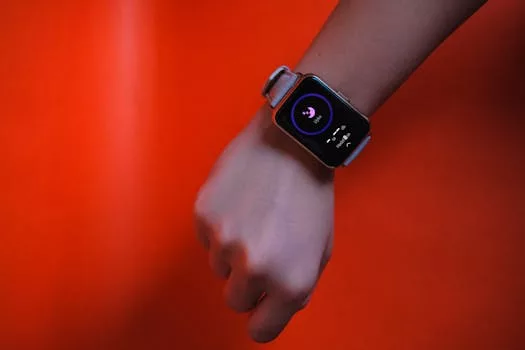
“
The Convergence of AI and Wearables: Shaping the Future of Personal Tech in 2025
Introduction to The Convergence of AI and Wearables
The Convergence of AI and Wearables is a rapidly evolving field that is transforming the way we live, work, and interact with technology. With the increasing popularity of wearable devices such as smartwatches, fitness trackers, and smart glasses, the potential for artificial intelligence (AI) to enhance their capabilities is vast. In this article, we will explore the current state of AI and wearables, their applications, and the future directions of this technology.
Current State of AI and Wearables
Today, wearables are equipped with a range of sensors that can track various aspects of our health and fitness, such as heart rate, steps taken, and sleep patterns. However, the real power of wearables lies in their ability to integrate with AI algorithms that can analyze this data and provide personalized insights and recommendations. For example, a smartwatch can use AI-powered algorithms to detect abnormal heart rhythms and alert the user to seek medical attention.
Applications of AI and Wearables
The applications of AI and wearables are diverse and widespread. Some of the most significant areas of impact include:
- Health and Fitness: AI-powered wearables can track vital signs, detect health anomalies, and provide personalized fitness recommendations.
- Smart Assistance: AI-powered wearables can provide users with smart assistance, such as virtual assistants, language translation, and navigation.
- Gaming and Entertainment: AI-powered wearables can enable new types of gaming and entertainment experiences, such as augmented reality and virtual reality.
Future Directions of AI and Wearables
As AI and wearables continue to evolve, we can expect to see new and innovative applications emerge. Some of the future directions of this technology include:
- Advanced Health Monitoring: AI-powered wearables will be able to track more complex health metrics, such as blood glucose levels and blood pressure.
- Enhanced Smart Assistance: AI-powered wearables will be able to provide more sophisticated smart assistance, such as predictive maintenance and personalized recommendations.
- Increased Adoption: AI and wearables will become more mainstream, with increasing adoption in industries such as healthcare, finance, and education.
Conclusion
The convergence of AI and wearables is revolutionizing personal tech, enabling new levels of health monitoring, fitness tracking, and smart assistance. As this technology continues to evolve, we can expect to see new and innovative applications emerge, transforming the way we live, work, and interact with technology.
The Convergence of AI and Wearables is a rapidly evolving field that holds great promise for the future of personal tech. With the increasing popularity of wearable devices and the growing capabilities of AI algorithms, we can expect to see significant advancements in the years to come.
The Convergence of AI and Wearables: A New Era of Personal Tech
The convergence of AI and wearables is not just about enhancing the capabilities of individual devices; it’s about creating a new ecosystem of personal tech that is more integrated, more intuitive, and more powerful. With AI-powered wearables, users will be able to access a range of services and applications that can help them manage their health, fitness, and daily lives.
The Future of Personal Tech: Trends and Predictions
So, what does the future hold for personal tech? Here are some trends and predictions that are likely to shape the industry:
- Increased Adoption of Wearables: Wearables will become more mainstream, with increasing adoption in industries such as healthcare, finance, and education.
- Advances in AI and Machine Learning: AI and machine learning algorithms will become more sophisticated, enabling wearables to provide more accurate and personalized insights.
- Greater Focus on Health and Wellness: Personal tech will place a greater focus on health and wellness, with wearables and AI-powered algorithms helping users to track and manage their health metrics.
The Convergence of AI and Wearables: Opportunities and Challenges
The convergence of AI and wearables presents both opportunities and challenges. On the one hand, AI-powered wearables have the potential to revolutionize personal tech, enabling new levels of health monitoring, fitness tracking, and smart assistance. On the other hand, there are concerns about data privacy, security, and the potential for AI-powered wearables to exacerbate existing social inequalities.
Conclusion: The Future of Personal Tech
In conclusion, the convergence of AI and wearables is a rapidly evolving field that holds great promise for the future of personal tech. With the increasing popularity of wearable devices and the growing capabilities of AI algorithms, we can expect to see significant advancements in the years to come. However, it’s also important to address the challenges and concerns associated with this technology, ensuring that AI-powered wearables are developed and deployed in a responsible and ethical manner.
The Convergence of AI and Wearables: Best Practices for Development and Deployment
So, what are the best practices for developing and deploying AI-powered wearables? Here are some guidelines to consider:
- Prioritize Data Privacy and Security: Ensure that user data is protected and secure, with robust encryption and secure data storage.
- Design for Inclusivity and Accessibility: Develop wearables that are accessible and usable by diverse populations, including older adults and people with disabilities.
- Foster Transparency and Trust: Provide users with clear and transparent information about how their data is being used, and ensure that AI-powered wearables are designed to promote trust and confidence.
The Convergence of AI and Wearables: Future Research Directions
Finally, what are the future research directions for AI and wearables? Here are some areas of investigation that are likely to be important:
- Advances in AI and Machine Learning: Developing more sophisticated AI and machine learning algorithms that can analyze complex health and fitness data.
- Human-Computer Interaction: Investigating how users interact with wearables, and developing more intuitive and user-friendly interfaces.
- Ethics and Social Implications: Examining the social and ethical implications of AI-powered wearables, and developing guidelines for responsible development and deployment.
The Convergence of AI and Wearables: Conclusion and Recommendations
In conclusion, the convergence of AI and wearables is a rapidly evolving field that holds great promise for the future of personal tech. To realize the potential of this technology, it’s essential to prioritize data privacy and security, design for inclusivity and accessibility, and foster transparency and trust. By following these guidelines and pursuing future research directions, we can ensure that AI-powered wearables are developed and deployed in a responsible and ethical manner, and that they have a positive impact on society.
The Convergence of AI and Wearables is a rapidly evolving field that is transforming the way we live, work, and interact with technology. With the increasing popularity of wearable devices and the growing capabilities of AI algorithms, we can expect to see significant advancements in the years to come. By understanding the current state of AI and wearables, their applications, and future directions, we can harness the potential of this technology to create a better future for all.
The Convergence of AI and Wearables: Shaping the Future of Personal Tech in 2025
The convergence of AI and wearables is not just about enhancing the capabilities of individual devices; it’s about creating a new ecosystem of personal tech that is more integrated, more intuitive, and more powerful. With AI-powered wearables, users will be able to access a range of services and applications that can help them manage their health, fitness, and daily lives.
The Impact of AI on Wearables
AI is having a significant impact on wearables, enabling them to provide more accurate and personalized insights. With AI-powered algorithms, wearables can analyze complex health and fitness data, providing users with detailed information about their physical activity, sleep patterns, and nutrition.
The Future of Wearables: Trends and Predictions
So, what does the future hold for wearables? Here are some trends and predictions that are likely to shape the industry:
- Increased Adoption of Wearables: Wearables will become more mainstream, with increasing adoption in industries such as healthcare, finance, and education.
- Advances in AI and Machine Learning: AI and machine learning algorithms will become more sophisticated, enabling wearables to provide more accurate and personalized insights.
- Greater Focus on Health and Wellness: Wearables will place a greater focus on health and wellness, with AI-powered algorithms helping users to track and manage their health metrics.
The Convergence of AI and Wearables: Opportunities and Challenges
The convergence of AI and wearables presents both opportunities and challenges. On the one hand, AI-powered wearables have the potential to revolutionize personal tech, enabling new levels of health monitoring, fitness tracking, and smart assistance. On the other hand, there are concerns about data privacy, security, and the potential for AI-powered wearables to exacerbate existing social inequalities.
The Convergence of AI and Wearables: Best Practices for Development and Deployment
So, what are the best practices for developing and deploying AI-powered wearables? Here are some guidelines to consider:
- Prioritize Data Privacy and Security: Ensure that user data is protected and secure, with robust encryption and secure data storage.
- Design for Inclusivity and Accessibility: Develop wearables that are accessible and usable by diverse populations, including older adults and people with disabilities.
- Foster Transparency and Trust: Provide users with clear and transparent information about how their data is being used, and ensure that AI-powered wearables are designed to promote trust and confidence.
The Convergence of AI and Wearables: Conclusion
The convergence of AI and wearables is a rapidly evolving field that holds great promise for the future of personal tech. With the increasing popularity of wearable devices and the growing capabilities of AI algorithms, we can expect to see significant advancements in the years to come. By understanding the current state of AI and wearables, their applications, and future directions, we can harness the potential of this technology to create a better future for all.
The Convergence of AI and Wearables: Future Research Directions
Finally, what are the future research directions for AI and wearables? Here are some areas of investigation that are likely to be important:
- Advances in AI and Machine Learning: Developing more sophisticated AI and machine learning algorithms that can analyze complex health and fitness data.
- Human-Computer Interaction: Investigating how users interact with wearables, and developing more intuitive and user-friendly interfaces.
- Ethics and Social Implications: Examining the social and ethical implications of AI-powered wearables, and developing guidelines for responsible development and deployment.
The Convergence of AI and Wearables: Conclusion and Recommendations
In conclusion, the convergence of AI and wearables is a rapidly evolving field that holds great promise for the future of personal tech. To realize the potential of this technology, it’s essential to prioritize data privacy and security, design for inclusivity and accessibility, and foster transparency and trust. By following these guidelines and pursuing future research directions, we can ensure that AI-powered wearables are developed and deployed in a responsible and ethical manner, and that they have a positive impact on society.
The Convergence of AI and Wearables: Final Thoughts
The convergence of AI and wearables is a rapidly evolving field that is transforming the way we live, work, and interact with technology. With the increasing popularity of wearable devices and the growing capabilities of AI algorithms, we can expect to see significant advancements in the years to come. By understanding the current state of AI and wearables, their applications, and future directions, we can harness the potential of this technology to create a better future for all.
The Convergence of AI and Wearables is a rapidly evolving field that holds great promise for the future of personal tech. With the increasing popularity of wearable devices and the growing capabilities of AI algorithms, we can expect to see significant advancements in the years to come. However, it’s also important to address the challenges and concerns associated with this technology, ensuring that AI-powered wearables are developed and deployed in a responsible and ethical manner.





